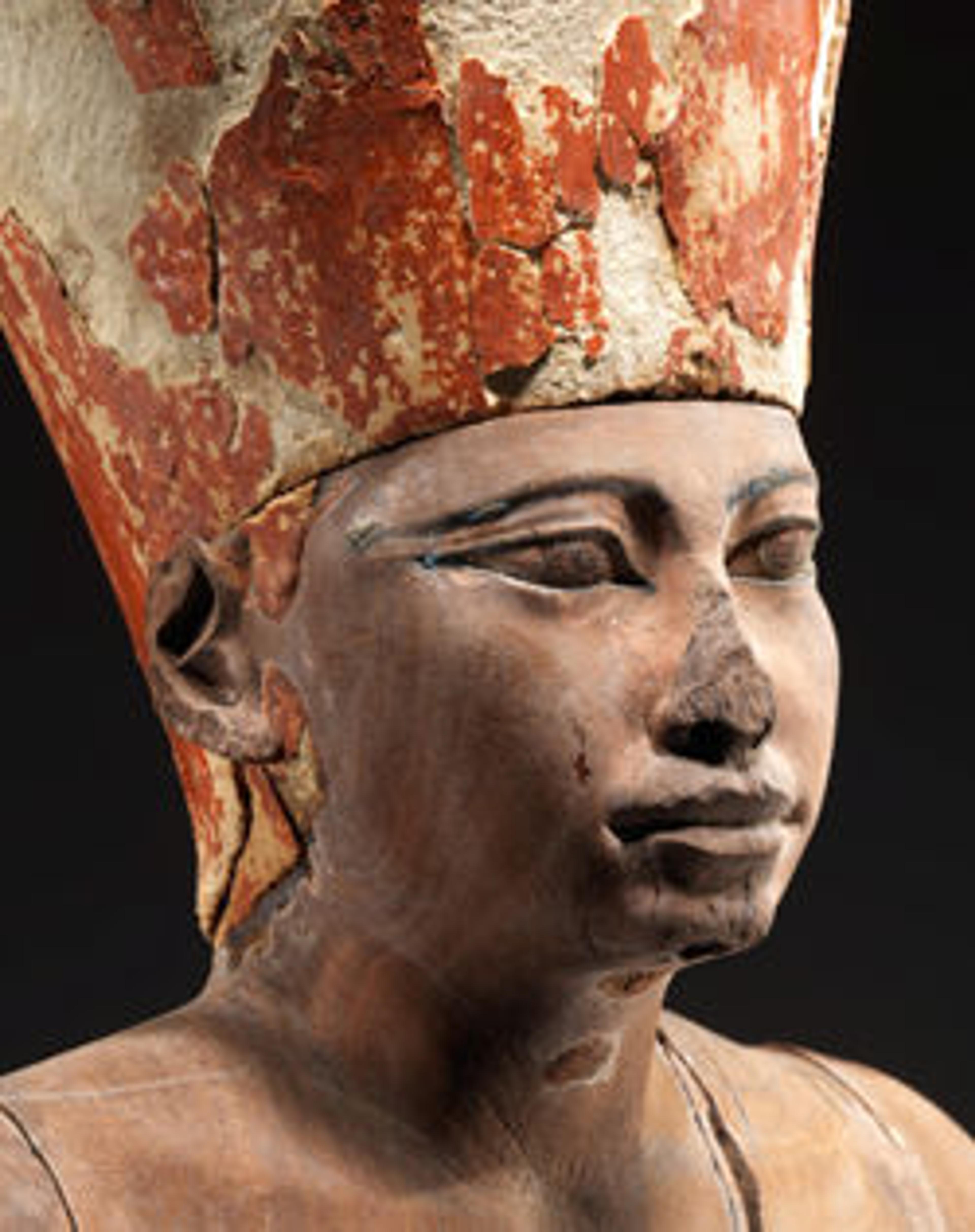Rosettes of Senebtisi
These gold-foil rosettes were once thought to be wig decorations. A detailed study of the burial photographs shows them grouped together, suggesting they were sewn onto a piece of rolled or folded cloth, rather than spaced apart on hair. Rosettes were used to decorate imitation leopard skins and cloaks or funerary palls. Based on the small size of the rosettes and the cloth, it seems most likely they originate from a cloak.
Artwork Details
- Title:Rosettes of Senebtisi
- Period:Middle Kingdom
- Dynasty:late Dynasty 12–early Dynasty 13
- Date:ca. 1859–1770 B.C.
- Geography:From Egypt, Memphite Region, Lisht North, Tomb of Senwosret (758), Pit 763, burial of Senebtisi, MMA excavations, 1906–07
- Medium:Gold
- Dimensions:Each: W. 1.2 cm (1/2 in.); D. 1.2 cm (1/2 in.)
- Credit Line:Rogers Fund, 1907
- Object Number:07.227.7
- Curatorial Department: Egyptian Art
More Artwork
Research Resources
The Met provides unparalleled resources for research and welcomes an international community of students and scholars. The Met's Open Access API is where creators and researchers can connect to the The Met collection. Open Access data and public domain images are available for unrestricted commercial and noncommercial use without permission or fee.
To request images under copyright and other restrictions, please use this Image Request form.
Feedback
We continue to research and examine historical and cultural context for objects in The Met collection. If you have comments or questions about this object record, please contact us using the form below. The Museum looks forward to receiving your comments.
